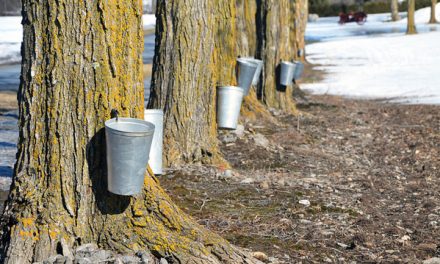CHESTERVILLE – The current unrest in the Netherlands between Dutch farmers and their government has put a spotlight on the challenge that all first world farmers face as global governments strive for new fertilizer emission targets.
The targets in Canada announced in mid-July include a 30 per cent reduction in fertilizer emissions by 2030.
Adding to the mix is the fallout from surcharge or tariff Canada has placed on Russian nitrogen, a main ingredient in fertilizer used by Canadian farmers.
Nitrogen fertilizers are one of the most critical inputs for corn production.
Nitrogen is essential to ensuring plants are healthy as they grow. Nitrogen plays a crucial role in the formation of protein, and protein is what makes up the tissue of living things like a plant.
The emission targets as well as the ongoing confusion in the nitrogen and fertilizer marketplace have created the perfect storm for farmers who are at the mercy of global, national, and locally inspired environmental restrictions, said Warren Schneckenburger the president of the Ontario Soil and Crop Improvement Association farms in South Dundas, Ontario.
Warren and his wife Christine operate Cedar Lodge Farms, a cash crop farm in South Dundas county. Warren and Christine are the third generation on the farm where they produce corn, soybeans, winter wheat, and edible beans.
The most common forms of nitrogen-based fertilizer include anhydrous ammonia, urea, and urea-ammonium nitrate (UAN) solutions.
Schneckenburger said different farms will use different amounts of different fertilizers to help them grow their crops.
“We buy dry nitrogen, which is urea, we buy dry nitrogen which is ammonium sulfate, mono ammonium sulfate; we buy liquid nitrogen, and we used to buy gas which is anhydrous ammonia, and then there is manure dry or solid. They all have a different concentration of nitrogen.”
An important issue is that using manure which may be affordable is unpredictable when it comes to creating a consistent production or crop yield.
Fertilizer that has been made gives farmers a better idea of what they can expect it to do for their crops.
Therefore, any increase in nitrogen costs for example could have a devastating effect on the Canadian agriculture industry.
Schneckenburger said when he buys urea; he is guaranteed by law to have 46 per cent nitrogen in it.
“Nitrogen is a very complicated topic to begin with, and when you start to wrap your head around where you can reduce emissions lost, it becomes that much more complicated,” he said.
He suggested much of the frustration farmers are experiencing is exactly because of the delicate and complicated process of using nitrogen for example and then having to incorporate more emission regulations.
Kelly Allen a consultant with Sollio & Uniag Cooperative Agriculture said there are ways to get away from using more commercial fertilizers, “but crops like corn and wheat use a lot of nitrogen,” he said.
He said the government should help farmers achieve their target and should provide incentives to encourage farmers to get there.
“There is always a way to get less losses and be more efficient. To stay the same is to move backwards.”
He said there are different strategies farmers can use to cut back on fertilizer use, like crop rotation and the use of cover crops but those take time to have an effect on emissions.
“Those all have some merits, but they all take time, energy and money. There has to be a methodical and thoughtful process to role this out.”
Added to the economic mix regarding fertilizers, experts are predicting that the cost of fertilizer which has been relatively stable for years, may now experience instability as the new norm.
A recent Policy Seminar Report from the C.D. Howe Institute is intended to shed some light on how attainable and reasonable the government’s plans are to reduce greenhouse gases by 2030. The report concluded that the results the government were hoping for were not going to be easy to achieve. The report suggested the government give all stakeholders from consumers to farmers and affected sectors of the agricultural industry a closer look at the plan to help make it more workable.
The Dutch government has said that they want to cut 50 per cent of its nitrogen and ammonia emissions by 2030.
Despite the Dutch governments offer to buy-out farmers and their property, Dutch farmers have not been impressed that Canada wants to reduce its fertilizer emissions by 30 per cent by 2030.











